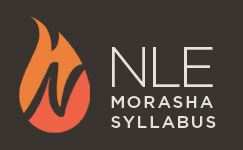
In the first two NLE Morasha classes on the System of Halachah, we learned that the Torah, with its oral interpretation, was taught to Moshe Rebeinu at Mount Sinai, in the Ohel Moed and at Aravot Moav. Moshe was instructed to have this explanation passed down orally from one generation to the next. Although it was originally forbidden to teach this oral tradition from a written text, it eventually became necessary to publish the Oral Torah, since circumstances placed it in danger of being forgotten. But even once it was written, it was redacted in a way that would preserve its oral nature.
In this class, we will address the skeptic: What evidence is there that the Oral Torah was given by God at Sinai? Perhaps it is the brilliant product of the Talmudic Rabbis? We have insight into part of the answer from Parshas Re’eh in the context of discussing the permissibility of eating kosher meat through schechita:
When the place chosen by God to carry His name is far away, you may slaughter your cattle and sheep that God has given you in the manner that I have commanded you. You may then eat them in your cities according to your heart’s desire. (Devarim 12:21)
If slaughter is to be performed in the manner that I have commanded you, where is it that these commands are written? Such instructions are found nowhere in the Written Torah. This must be a reference to an oral tradition that existed already at the time of the giving of the Torah. Rashi (IBID) therefore concludes, “We learn from here that there is a mitzvah to process kosher animals through schechita. These are the halachos of schechita that were taught to Moshe (orally) at Mount Sinai.”
There are five categories of evidence for the Oral Torah discussed in the NLE Morasha Syllabus Shiur on the Necessity, Advantages and Accuracy of the Oral Torah:
- Vocalizing and Punctuation: Since the Written Torah does not contain vocalization or punctuation marks, a linguistic tradition is necessary in order to read the text properly. It would be inconsistent (and intellectually dishonest) to accept the linguistic tradition and discard the legal tradition when they are both parts of the same oral tradition.
- Seeming Contradictions Within the Text: A close examination of the Torah’s text reveals many seeming contradictions and textual anomalies. Resolving these difficulties is a significant component of the work of classical Biblical commentators such as Rashi. In fact, any student of Rashi assumes that if there were not some anomaly with the verse at hand, Rashi would not have commented on it! Since the Written Torah is God’s handiwork, it is obviously perfect and flawless. The resolutions of these textual difficulties have been transmitted in an oral tradition.
- Unexplained Laws: The Torah makes general reference to many laws without specifying how to observe them. How is brit milah (circumcision) performed? How is a sukkah constructed? What and how does one write on the doorposts of one’s home?
- Unexplained Institutions: The Torah makes reference to a host of social institutions without ever specifying the procedures involved in implementing them. One example is marriage. The Torah lists some of the obligations a husband has toward his wife, but never specifies how a wedding is performed. The procedure for divorce is a bit more explicit, “Write her a book of severance” (Devarim 24:1), but nowhere does it explain what is written in this book. The Torah talks about our relationships with a convert to Judaism, but it does not tell us the conversion process.
Since legal definitions for these unexplained institutions are required for a functioning society, there must have been an oral tradition to explain them. In all these cases, we need the Torah to give us detailed instructions. The fact that the Written Torah does not tell us how to fulfill these mitzvos is in itself a clear indication that there is an accompanying Oral Torah.
- Textual References to an Oral Tradition: The blatant lack of vital information in the Written Law is not the strongest proof of the existence of the Oral Torah. More compelling is that the Written Torah itself refers explicitly to the Oral Torah in a number of places. Without the Oral Torah, one does not know the procedure of kosher slaughter as mentioned above. Moreover, even though God showed Moshe Rebeinu how to construct the Mishkan, those details are not recorded in the Torah. Again, God is referring to instructions that were originally given orally – further evidence of the existence of an Oral Torah.
This shiur further discusses advantages of instituting the Oral Torah as well as analyzing the accuracy of the oral transmission.



















